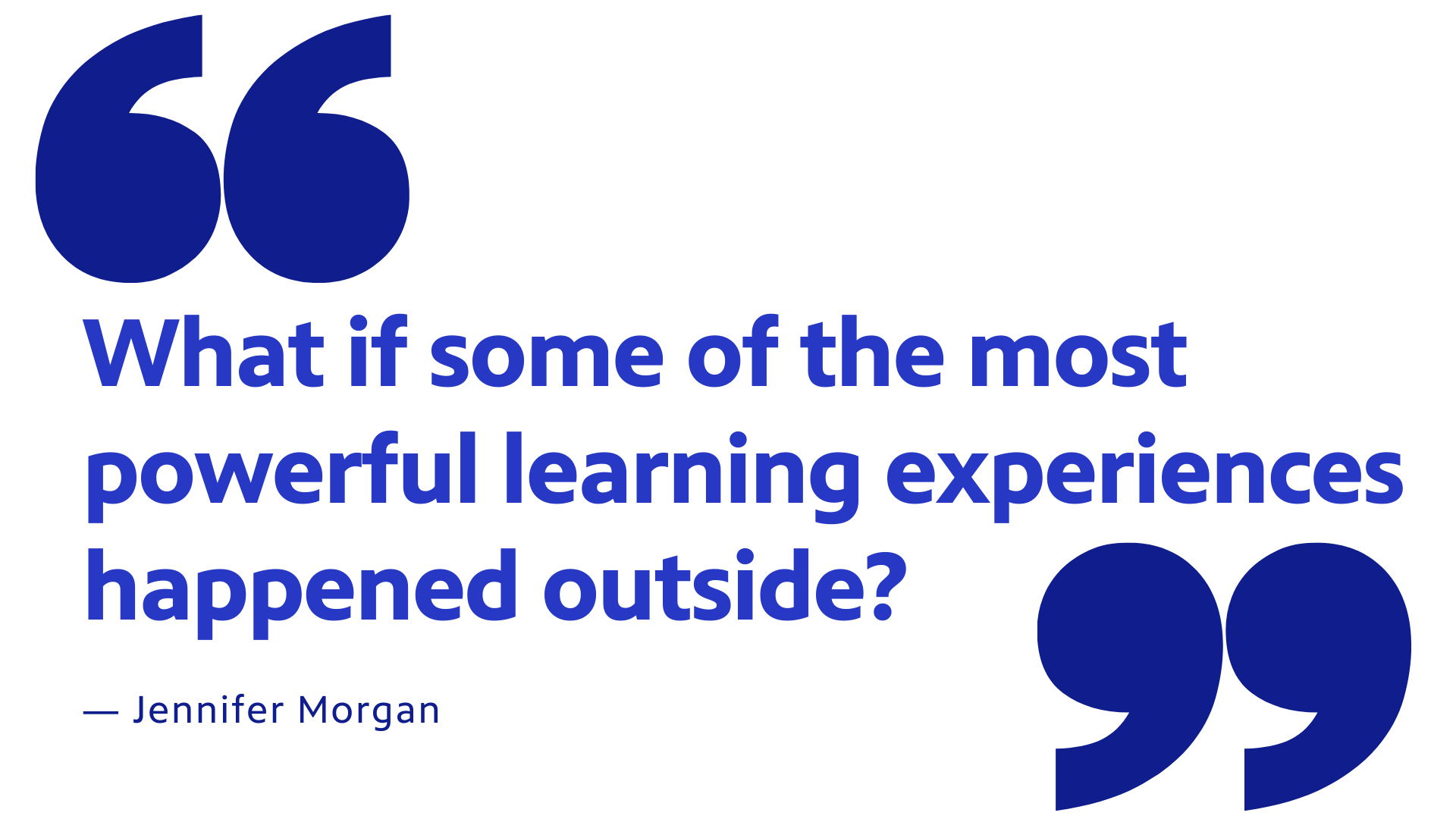
What do you think about when you think about school? When polling high school students at my school and how they picture school, they shared that they often picture desks, whiteboards, fluorescent lights, and computers. But what if we changed this? What if some of the most powerful learning experiences happened outside?
Research continues to show that outdoor learning improves student engagement, academic performance, and social-emotional well-being. These are all qualities we value as teachers. Whether it is a quick lesson outside or a full place-based learning unit, integrating nature into the school day is a proven way to help students thrive.
1. Outdoor Learning Increases Student Engagement
One of the biggest challenges in education today is keeping students engaged. Nature has a way of capturing attention, sparking curiosity, and making learning more meaningful. Studies show that students focus better and retain information longer when lessons take place outdoors (Kuo et al., 2019).
Ideas for Implementation:
- Take lessons outside: Reading, discussions, and even math can be completed in outdoor spaces on school grounds.
- Use local landmarks: The Tennessee River, Cypress Creek, and TVA trails provide great settings for place-based learning in NW Alabama.
- Incorporate movement: Allow students to explore, measure, observe, and interact with their environment to keep them actively engaged. Use what is available to you naturally.
2. Outdoor Learning Improves Social-Emotional Health
Spending time outside is just as good for academics as it is for mental and emotional well-being. Research shows that students who learn in outdoor settings experience less stress, greater emotional regulation, and increased positive social interactions (Tillmann et al., 2018). In a world where anxiety and disengagement are increasing among students, outdoor learning offers a natural way to help them reconnect and reset.
Ideas for Implementation:
- Start with moments of mindfulness outside: Even 5 to 10 minutes outdoors before or after a lesson can help students reflect and refocus.
- Encourage teamwork: Outdoor activities naturally promote collaboration, problem-solving, and communication skills.
- Let students take ownership: Have students help plan or lead small outdoor activities to boost confidence and involvement.
3. Outdoor Learning Enhances Academic Success
Nature-based learning isn’t just about feeling good, it directly improves academic performance. Becker shows that students who engage in outdoor learning score higher on tests, demonstrate better critical thinking, and retain knowledge longer (Becker et al. 2017) The combination of hands-on experiences, movement, and connection to real-world settings makes learning more effective and enjoyable.
Ideas for Implementation:
- Science in nature: Conduct simple experiments outside studying plant life, water ecosystems, or weather patterns.
- Literature in place: Read American literature near the Tennessee River or write descriptive essays inspired by outdoor settings.
- Math in motion: Use natural elements to explore geometry, measurement, and data collection in a tangible way.
4. Outdoor Learning Encourages Physical Activity and Overall Well-Being
Many students spend most of their day sitting inside. Outdoor learning increases movement, encourages exploration, and promotes physical health. Research has shown that students with access to outdoor education have better motor skills, increased energy levels, and improved overall health (McCormick, 2017).
Ideas for Implementation:
- Outdoor brain breaks: Short walks or stretching outside between lessons can help with focus and energy.
- Nature-based PE: Use school green spaces for movement-based learning that connects to the curriculum.
- Encourage exploration: Let students interact with their surroundings, whether it is a school garden or a local nature trail.
5. Outdoor Learning Fosters Environmental Awareness and Responsibility
When students learn in nature, they develop a deeper appreciation for the environment. Research suggests that early exposure to outdoor learning leads to stronger environmental stewardship in adulthood (Sobel, 2018). By integrating nature into our classrooms, we can help students become more aware of the world around them and feel empowered to take care of it.
Ideas for Implementation:
- Local environmental projects: Water testing or litter clean-up efforts
- School sustainability initiatives: Encourage students to plant gardens, start a recycling campaign, or rethink consumerism.
- Connect lessons to real-world environmental issues: Help students see how their learning applies to the bigger picture.
With so many benefits—higher engagement, stronger academics, improved mental health, positive social-skills, and better physical well-being—it is clear that outdoor learning deserves a bigger place in our classrooms. While we may not always be able to take full lessons outside, even small steps can make a difference. Remember, it can be something simple like a quick discussion outdoors about a text or an extensive place-based unit, these opportunities can transform the way students and teachers connect learning and think about their community and world around them.
Embracing outdoor education is not just about teaching content outside, it is about creating experiences that help students grow in every way possible. Let’s start finding more ways to bring the classroom outside and watch out students thrive!
Click here to view a list of sources:
- Becker, C., Lauterbach, G., Spengler, S., Dettweiler, U., & Mess, F. (2017). Effects of regular classes in outdoor education settings: A systematic review on students' learning, social, and health dimensions. International Journal of Environmental Research and Public Health, 14(5), 485.
- Kuo, M., Barnes, M., & Jordan, C. (2019). Do experiences with nature promote learning? Converging evidence of a cause-and-effect relationship. Frontiers in Psychology, 10, 305.
- McCormick, R. (2017). Does access to green space impact children’s mental well-being? International Journal of Environmental Research and Public Health, 14(3), 236.
- Sobel, D. (2018). The childhood and nature connection: Why children need nature and nature needs children. Redleaf Press.
- Tillmann, S., Tobin, D., Avison, W., & Gilliland, J. (2018). Mental health benefits of interactions with nature in children and teenagers: A systematic review. Journal of Epidemiology and Community Health, 72(10), 958-966.






Follow Us